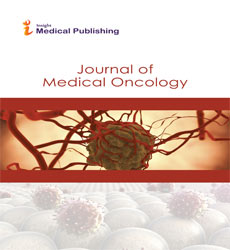Regulation of Focal Adhesions by PI(4,5)P2 and PI(3,4,5)P3 in Cancer Cells
Abstract
Phosphoinositides and their downstream signalling molecules are involved in adhesion, proliferation and invasion. In this study, MDA-MB-231 breast cancer has been used to investigate the possible role of PI(4,5)P2 and PI(3,4,5)P3 in the regulation of FA turnover. Firstly, PI(4,5)P2 and PI(3,4,5)P3 have been visualised by PLC�??1-PH-GFPor mCherry and Btk-PH-GFP or mCherry respectively. Then, the spatial organisation of PI(4,5)P2 and PI(3,4,5)P3 with FA proteinswas directly studied. PI(4,5)P2 and PI(3,4,5)P3 were moderately co-localised with FA proteins, such as talin, vinculin, FAK, paxillin and zyxin. PLC inhibition reduced co-localisation between PI(4,5)P2 and FA, while PI3K inhibition had no effect. Temporal organisation between PI(4,5)P2 and PI(3,4,5)P3 and FAs was studied. The local levels of PI(4,5)P2 within a single FA increased gradually during assembly and declined gradually during the disassembly process. Whereas, PI(3,4,5)P3 levels within FA were almost at a constant level during FAsassembly and disassembly. PLC inhibition significantly reduced the decline in PI(4,5)P2 levels within single FA disassembly, while PI3K inhibition had only a small effect. Additionally, PLC and PI3K significantly inhibited FA turnover, cell migration and wound healing. Finally, Co-IP studies showed that PI3K p110α and PLC β1 directly associated with vinculin and talin, while PI3K p85 did not interact with them. Reverse co-IP was used to confirm the interaction of PLC and PI3K with FA proteins.
Open Access Journals
- Aquaculture & Veterinary Science
- Chemistry & Chemical Sciences
- Clinical Sciences
- Engineering
- General Science
- Genetics & Molecular Biology
- Health Care & Nursing
- Immunology & Microbiology
- Materials Science
- Mathematics & Physics
- Medical Sciences
- Neurology & Psychiatry
- Oncology & Cancer Science
- Pharmaceutical Sciences
